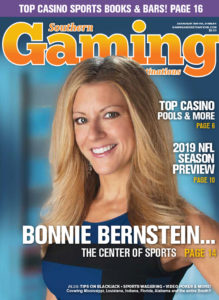
In the world of rock music, there are some frontmen who are so strongly associated with the band, it’s impossible to envision the band existing without him. You couldn’t have the Rolling Stones without Mick Jagger; Steven Tyler is the face of Aerosmith; and for years, Freddie Mercury was the performing heart, soul, and voice of Queen. When Mercury met his untimely demise in 1991, it was a foregone conclusion that Queen was over. Through the years, there have been occasional attempts at reviving the band. George Michael’s 1992 performance at the Freddie Mercury tribute concert led many to think that he might step in; then the 2005-2006 tour of Queen + Paul Rodgers seemed like it might pave the way for future studio albums, but that ultimately fizzled out. It wasn’t until Adam Lambert captivated America in Season 8 of “American Idol” that Queen found what they were looking for, not as a replacement for their irreplaceable frontman, but a new voice to bring 30 years of Queen music to new audiences.
Queen + Adam Lambert, as they’re being formally billed, began a ten date limited residency in Las Vegas on September 1. The concerts were performed at the Park Theater at Park MGM, a 5,200 seat venue featuring state-of-the-art audio and visual technology. The Park Theater is a perfect fit for Queen, a band long known for their groundbreaking theatrics, and the residency will give long-time fans and relative newcomers to the music a not-to-be-missed opportunity to experience one of rock’s legendary acts.
Queen got started when Brian May and a college friend, bass player Tim Staffell decided to form a band, and advertised for a drummer. Roger Taylor was one of those who answered the ad, and after auditioning, was made a member of the band, originally known as “Smile”. Staffell at the time was attending art school, and was friends with another student known then as Farroukh Bulsara. Bulsara joined the band, and Staffell left to join a different band. Bulsara, who preferred to be known as Freddie, convinced Taylor and May to change the name of the band to “Queen”; at the same time, Bulsara changed his last name to Mercury, and they began looking for another bass player. Eventually, they settled on John Deacon, and they began performing and rehearsing.

By 1973, Queen had a record deal, and released their first album, simply titled “Queen”. Although it was a critical success, it performed poorly in terms of sales. Their follow-up albums, “Queen II” and “Sheer Heart Attack”, fared somewhat better, but the band was still relatively unknown in the United States, and an unfavorable record deal with Trident/EMI was wearing the band’s spirits down. They were able to secure a new manager, who signed them to a deal with Elektra Records in the US. Buoyed by their new situation, the band returned to the studio and emerged with a monster, “A Night At the Opera”. While the album is most notable for the legendary “Bohemian Rhapsody”, it also boasts concert staples such as “Love of My Life”, “You’re My Best Friend”, “’39”, and “I’m in Love with My Car”. At the time, it was the most expensive album ever recorded, owing to the enormous amount of multi-tracking and mixing required for songs such as “The Prophet’s Song” and “Bohemian Rhapsody”. Regardless of the cost, it became their breakthrough album, and both the album and “Bohemian Rhapsody” were regarded as instant classics. To this day, the song remains the third highest selling single of all time in the UK. Queen released a video of the song “Bohemian Rhapsody”, which showcased the iconic four band member near-dark image that was used on the cover of “Queen II”. While their reasons for taping the video were actual rather prosaic- they didn’t want to lip-synch the song on the TV show “Tops of the Pops”- the video was nonetheless groundbreaking, and was hailed in “The Guardian” as nearly single-handedly ushering in the age of MTV.
Not a group to rest on their laurels, Queen quickly got back in the studio to record their next album; viewed as a sort of companion piece to “A Night At The Opera”, this one was called “A Day At The Races”, and boasted such hits as “Somebody To Love” and “Tie Your Mother Down”. Their streak of hit-making albums continued with “News of the World”, which gave the sports world it’s favorite anthem, “We Are The Champions”, along with the unforgettable “stomp-stomp-clap” of “We Will Rock You”. By this time, the band was selling out arenas around the world, and more albums soon followed, along with hits such as “Crazy Little Thing Called Love” and “Another One Bites The Dust”. After the release of the poorly-received “Hot Space”, however, it seemed that the band’s fortunes waned somewhat. While still popular in Europe, they cooled down considerably in the U.S., due in part to the vast change of musical tastes and the rise of “New Wave” music. The bands 1984 album release, “The Works”, again contained songs that are concert favorites including “Hammer to Fall”, “Radio Ga Ga”, and “I Want to Break Free”, but nonetheless, the album fared poorly in the US, and it seemed that Queen’s reign might be at an end.

A controversial series of concerts in Sun City, South Africa, added to the band’s woes, and the band might have even broken up, had it not been for the events of July 13, 1985. Bob Geldof, lead singer of the band “The Boomtown Rats”, decided that the world of rock had an obligation to do something to raise awareness and money for famine victims in Ethiopia. Geldof and co-organizer Scottish musician Midge Ure put together “Live Aid”, an ambitious dual concert held at Wembley Stadium in England, and John F. Kennedy Stadium in Philadelphia. Between the two venues, nearly every major rock act of the previous 20 years was present in one form or another, and almost to a person, every one of them will agree that Queen- and particularly Freddie Mercury- put on not only the best show of the day, not only the best show of their career, but quite possibly the best live performance in the history of rock music. This opinion is shared by many music publications, critics, and of course, any of the 1.9 billion people who witnessed the performance on live TV. The 20 minute set catapulted Queen back to the top of the rock world, but unbeknownst to them, their touring days were rapidly drawing to a close.
Following their triumph at Live Aid, the band released a new studio album, “A Kind of Magic”, with several of the songs being used in the soundtrack of the sci-fi film “Highlander”. The album was a success, and they set out to tour in support of the album. Their performance at Knebworth Park in England would be Queen’s final live performance with Freddie, as he was diagnosed with HIV in 1987. While the rigors of touring proved to be too much for Freddie, he and the rest of the band continued to record, with their final 3 albums of original material being released between 1987 and Mercury’s death in 1991. After Freddie’s passing, the rest of the band decided a fitting tribute to their legendary frontman would be a concert, and “The Freddie Mercury Tribute Concert” was held on April 20, 1992. Artists and friends such as Elton John, David Bowie and many others performed alongside Brian, Roger and John. The unmistakable chemistry between the band and George Michael, and his exceptional performance on “Somebody To Love” led to a great deal of speculation about Michael eventually stepping into Freddie’s role in the band, but it remained speculation, and the members of Queen began to go their separate ways.
In 2004, it was announced that Brian and Roger would be touring with Bad Company frontman Paul Rodgers. The tour was promoted as “Queen + Paul Rodgers”- a billing strategy that would be repeated a few years later with Adam Lambert- to allay any thoughts that Rodgers was “replacing” Freddie in the band. The tour was financially successful, but both parties later agreed that it was not a terribly good match musically. By this time, Bassist John Deacon had retired from the band and was living a very quiet life in Southwest London; Taylor was playing with his band, “The Cross”, and May earned his PhD in Astrophysics- an accomplishment he had put on hold for 33 years due to the success of Queen. May also became active in animal activism, being particularly vocal in his opposition to the hunting of foxes and culling of badgers. Following the less-than-stellar reception to the Queen + Paul Rodgers album “The Cosmos Rocks”, it seemed like Queen, as a band, had finally reached the end.
Enter Adam Lambert, again. Like many aspiring singers, Lambert set his sights on winning “American Idol”, a path that didn’t guarantee success in the music business, but had certainly done well for the careers of many before him. In an ironic bit of foreshadowing, one of the songs Lambert auditioned with was “Bohemian Rhapsody”. At the end of the season, Lambert and Kris Allen were the last 2 standing, but Lambert was the runner-up. Nonetheless, Lambert’s voice and undeniable charisma made many sit up and take notice, including Brian May. May had seen Lambert’s audition tape of “Rhapsody”, and then actually had the opportunity to perform with him during the course of the 8th season of “Idol”, and realized there was a great deal of synergy between the two parties. In June of 2012, Queen + Adam Lambert played their first official concert in Kiev, and began making plans to tour. To date, they have done dozens of concerts around the world including a nineteen date North American tour in 2014, a European/Asian tour in 2016, and a 2017 North American tour, which reached twenty six cities in the US and Canada.
Their September visit to Las Vegas marks their first residency, a relatively new performing format that was popularized by singers such as Celine Dion, Bette Midler, Barry Manilow and Elton John. The residency format allows performers to reduce the rigors of touring by setting up a residency in one of the world’s most popular tourist destinations and allowing fans from all over the U.S. to see the show AND spend some time exploring all that Las Vegas has to offer.

Lambert, as well as May and Taylor, are very clear that Adam is not a replacement for Freddie. During the concert, they make this point explicitly, and there are even several poignant tributes to Freddie during the show, along with some special performances made possible by modern technological wizardry. Freddie may be gone, but he’s not forgotten, and his presence is felt during the course of the show in many ways.
Prior to the September dates, the band was being a little coy about exactly what to expect from the Vegas shows. The 2017 tour was one of the most extravagant events the band ever offered and integrated lasers, pyrotechnics, and special effects featuring a giant interactive version of “Frank”, the robot from the “News of the World” cover. The series is being officially billed as “The Crown Jewels”, and will feature long-time Queen hired gun Spike Edney on keyboards, along with Neil Fairclough doing duties on bass, and Tyler Warren on percussion. The shows began on September 1st and end September 22. If you have the opportunity to check out the performance, be sure to do it. It is a sure bet!
CLICK HERE for tickets and more information.
QUEEN ON SCREEN
In a delightful bit of synchronicity, Queen’s Vegas residency comes just a few weeks before the release of the film “Bohemian Rhapsody”, the long-awaited biopic which will be in theaters on Nov. 2. Starring “Mr. Robot” star Rami Malek as Freddie, and Gwilym Lee, Ben Hardy, and Joseph Mazzello as May, Taylor and Deacon, the film chronicles the bands rise from struggling students, to their successes and setbacks, and culminates with their legendary performance at Live Aid. The film is directed by Brian Singer, best known for his work on several X-Men films, and is being released by 20th Century FOX.
Article By Terry Parrett
Photos by: BojanHohnjec_MiracleProductionsLLP





